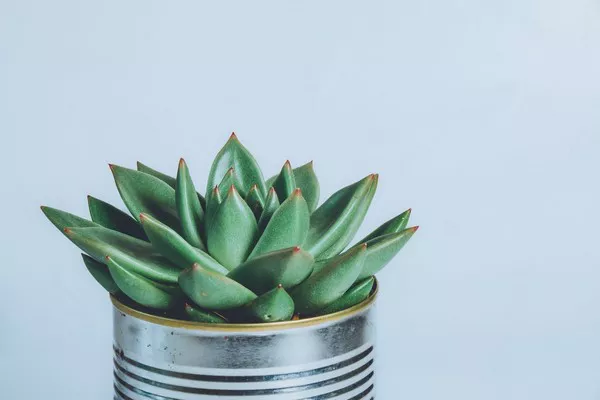Succulents have become increasingly popular in recent years due to their unique beauty, low maintenance requirements, and versatility in home and garden décor. If you’re a succulent enthusiast looking to give your plants a fresh start, or if you’ve just acquired a new succulent and want to ensure it thrives, transplanting is a crucial skill to master.
Understanding the Basics of Succulents
Before we delve into the art of transplanting succulents, it’s essential to grasp the fundamental characteristics of these remarkable plants. Succulents are a diverse group of water-storing plants known for their thick, fleshy leaves and stems. They have adapted to thrive in arid environments, making them resilient and capable of storing water for extended periods.
Choosing the Right Time
Timing is crucial when it comes to transplanting succulents. The ideal time for this task is during the growing season, typically spring and early summer. Succulents are more active during this period, which means they are better equipped to handle the stress of transplantation and establish roots more effectively.
Preparing Your Tools and Materials
For a successful transplant, you will need specific tools and materials. These include:
A Well-Draining Container: Choose a pot or container with drainage holes to prevent excess water retention, which can lead to root rot.
Succulent Soil Mix: Use a well-draining soil mix designed for succulents or cacti, or create your own by blending potting soil with sand and perlite.
Succulent Plants: The succulents you intend to transplant.
Trowel or Spatula: For gently removing the succulents from their current container.
Gloves: Protect your hands from spines, thorns, or irritants.
Organic Fertilizer: A balanced, low-nitrogen fertilizer suitable for succulents.
Preparing the Succulents
Before transplanting your succulents, it’s important to prepare them appropriately. Here are the steps to follow:
Watering: Water your succulents a few days before transplantation. This will help loosen the soil and make it easier to remove them from their current container.
Gently Remove: Carefully remove the succulent from its current pot. Hold the plant at its base and tap the pot’s sides to loosen the soil.
Shake Off Excess Soil: Gently shake off excess soil from the roots. This helps in assessing the health of the roots and untangling them if they are root-bound.
The Transplantation Process
Now, let’s get into the heart of the matter – the actual transplanting process.
Prepare the New Container: Fill the new pot with a layer of succulent soil mix. The pot should be the appropriate size to accommodate your succulent with a little room to grow.
Create a Hole: Make a small hole in the center of the soil where you will place your succulent.
Place the Succulent: Gently position the succulent in the hole, making sure it’s at the same depth as it was in its previous container.
Fill with Soil: Carefully fill the space around the succulent with the succulent soil mix, ensuring it is firmly packed but not compacted. Leave a slight depression around the plant to prevent water runoff.
Water Sparingly: After transplanting, avoid watering immediately. Wait for a few days to allow the roots to recover and avoid overwatering, which can lead to rot.
Caring for Transplanted Succulents
After transplanting your succulent, proper care is essential to ensure it thrives in its new environment. Here are some key points to consider:
Sunlight: Place your transplanted succulent in a location with the appropriate amount of sunlight based on its species. Most succulents prefer bright, indirect light.
Watering: Succulents should be watered sparingly, allowing the soil to dry out completely between waterings. Avoid overwatering, as this can lead to root rot.
Fertilization: Fertilize your succulents sparingly during the growing season. Use a balanced, low-nitrogen fertilizer to avoid excessive growth.
Pest Control: Keep an eye out for pests such as aphids and mealybugs, which can harm your succulents. Treat any infestations promptly.
Troubleshooting Transplant Issues
Even with the best intentions and care, transplanting succulents can sometimes result in problems. Here are some common issues and how to address them:
Yellowing Leaves: Yellow leaves may indicate overwatering. Reduce watering and ensure the soil dries out properly.
Wilting: Wilting can be a sign of underwatering. Water your succulent and adjust your watering schedule.
Rotting Roots: If you notice signs of root rot, such as black, mushy roots, remove the affected areas immediately. Repot the succulent in fresh soil.
Falling Leaves: Some leaf loss is normal during the transplanting process. However, if it continues, ensure your succulent is receiving adequate light and follow proper care guidelines.
Conclusion
Transplanting succulents is a crucial skill for succulent enthusiasts, allowing you to refresh and rejuvenate your plants or provide a healthy start for new acquisitions. By understanding the basics, choosing the right time, preparing your tools, and following the transplanting process, you can ensure that your succulents thrive in their new homes. Proper care, attention to potential issues, and patience will result in healthy and beautiful succulents that will brighten your indoor or outdoor space for years to come. Remember that the key to successful succulent transplanting is a combination of knowledge, care, and the love you put into nurturing these unique and captivating plants.


